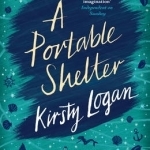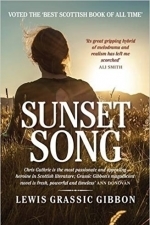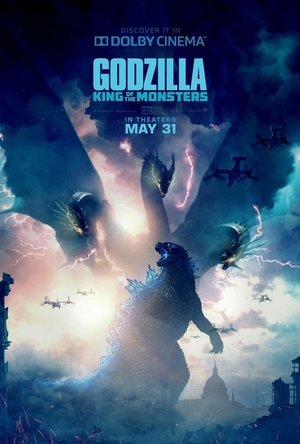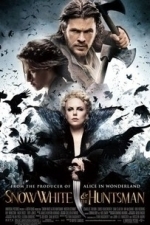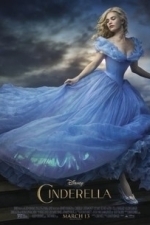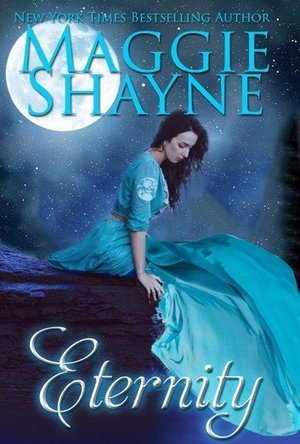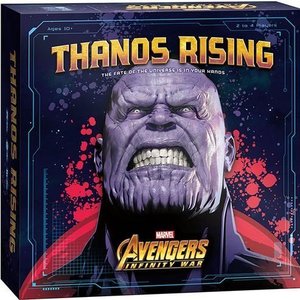Search
Search results
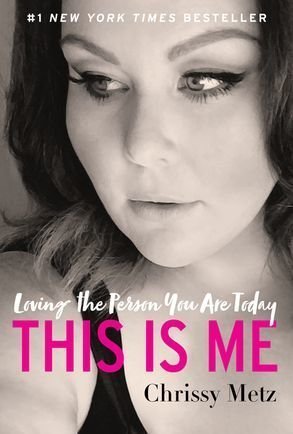
This Is Me: Loving the Person You Are Today
Book
An inspirational book about life and its lessons from the Golden Globe and Emmy nominated star of...
Celebrity Memoir Celebrity Humor Body Positivity Confidence
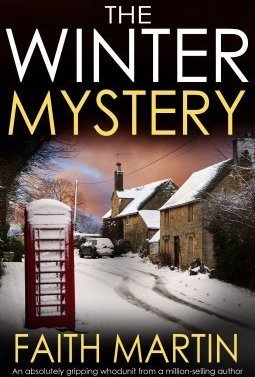
The Winter Mystery
Book
THE WINTER MYSTERY by Faith Martin Discover a new series of whodunits by million-selling author...
Contemporary Fiction Crime Mystery Whodunit
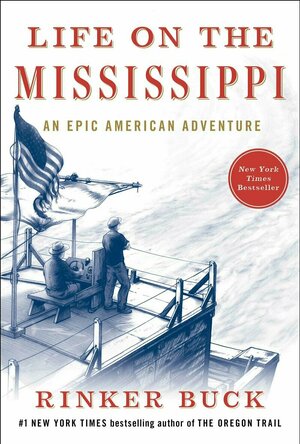
Life on the Mississippi
Book
The eagerly awaited return of master American storyteller Rinker Buck, Life on the Mississippi is an...
Eilidh G Clark (177 KP) rated A Portable Shelter in Books
May 13, 2017
‘…there’s no other way to give you the truth except to hide it in a story and let you find your own way inside.’
‘…there’s no other way to give you the truth except to hide it in a story and let you find your own way inside.’
Kirsty Logan’s first collection of short stories, The Rental Heart and Other Fairytales, published by Salt in 2014, won the Polari First Book Prize in 2015. A Portable Shelter is her second collection. Set in a small cottage in the rural north coast of Scotland, Ruth and Liska are expecting their first child. The couple believe that their unborn baby will have a better chance of survival away from the harshness of suburban life. They make a pact with one another, that they will only ever tell their child the truth. Yet while Liska is asleep or Ruth is at work, each whispers secret stories to their unborn child. Delving into fantastical tales about people from their past and re-telling stories that span from generation to generation, the couple unfold the horrors of the real world. Whilst these tales, laced in myth and legend, and fattened with the magic of the imagination, demonstrate the art of oral storytelling, Logan reaches further to show the reader why storytelling is important.
While this book is primarily a collection of short stories, its novel like structure frames each story with a preceding monologue from either Ruth or Liska. The monologues offer delightful morsels of description that bring the harshness of Mother Nature into the safety of the couple’s bedroom, “right now our home is speaking to you. The walls creak their approval in the wind. The rain applauds on the roof. The lighthouse beam swoops, swoops, swoops. The tide breathes loud and slow like a giant. If you listen carefully, perhaps you can even hear the moon hum.” The pace of these sentences, combined with the delicacy of language demonstrates Logan’s skill at describing the sublime spirit of the natural world, which brings the narrative to life.
Most impressive though, is Logan’s poetic language and carefully crafted sentences which create the most beautiful imagery. In ‘Flinch,’ for example – James is a fisherman struggling with his identity, yet his affiliation with the land is locked into his first-person point of view where the reader gets to closely experience what he sees, “The sky is pinkish-grey like the insides of shells. Speckled bonxies wheel overhead. Seals loll on the rocks, fat as kings. The rising mist is cool and milky.” Any of these lines could easily be arranged into a poem and with sentences that are squeezed tight; they create a wonderful poetic rhythm. Logan uses this technique throughout her novel, demonstrating the precision and craft in her work. There are definite similarities in her writing style to fellow Scottish novelist and poet Jenni Fagan. Both authors use rich language, which is well crafted and smattered with vernacular. Furthermore, combining this with the reoccurring theme of identity, the oral storytelling tradition, landscape, folklore, and myth, it is clear to see why these authors contribute to the growing canon in Scottish literature.
This is a book that I will read over and over again because I know that in each reading, I will find something new. A Portable Shelter, I feel, deserves a place on my ‘keep’ book shelf.
A Portable Shelter, Kirsty Logan, London: Vintage, 2015
Kirsty Logan’s first collection of short stories, The Rental Heart and Other Fairytales, published by Salt in 2014, won the Polari First Book Prize in 2015. A Portable Shelter is her second collection. Set in a small cottage in the rural north coast of Scotland, Ruth and Liska are expecting their first child. The couple believe that their unborn baby will have a better chance of survival away from the harshness of suburban life. They make a pact with one another, that they will only ever tell their child the truth. Yet while Liska is asleep or Ruth is at work, each whispers secret stories to their unborn child. Delving into fantastical tales about people from their past and re-telling stories that span from generation to generation, the couple unfold the horrors of the real world. Whilst these tales, laced in myth and legend, and fattened with the magic of the imagination, demonstrate the art of oral storytelling, Logan reaches further to show the reader why storytelling is important.
While this book is primarily a collection of short stories, its novel like structure frames each story with a preceding monologue from either Ruth or Liska. The monologues offer delightful morsels of description that bring the harshness of Mother Nature into the safety of the couple’s bedroom, “right now our home is speaking to you. The walls creak their approval in the wind. The rain applauds on the roof. The lighthouse beam swoops, swoops, swoops. The tide breathes loud and slow like a giant. If you listen carefully, perhaps you can even hear the moon hum.” The pace of these sentences, combined with the delicacy of language demonstrates Logan’s skill at describing the sublime spirit of the natural world, which brings the narrative to life.
Most impressive though, is Logan’s poetic language and carefully crafted sentences which create the most beautiful imagery. In ‘Flinch,’ for example – James is a fisherman struggling with his identity, yet his affiliation with the land is locked into his first-person point of view where the reader gets to closely experience what he sees, “The sky is pinkish-grey like the insides of shells. Speckled bonxies wheel overhead. Seals loll on the rocks, fat as kings. The rising mist is cool and milky.” Any of these lines could easily be arranged into a poem and with sentences that are squeezed tight; they create a wonderful poetic rhythm. Logan uses this technique throughout her novel, demonstrating the precision and craft in her work. There are definite similarities in her writing style to fellow Scottish novelist and poet Jenni Fagan. Both authors use rich language, which is well crafted and smattered with vernacular. Furthermore, combining this with the reoccurring theme of identity, the oral storytelling tradition, landscape, folklore, and myth, it is clear to see why these authors contribute to the growing canon in Scottish literature.
This is a book that I will read over and over again because I know that in each reading, I will find something new. A Portable Shelter, I feel, deserves a place on my ‘keep’ book shelf.
A Portable Shelter, Kirsty Logan, London: Vintage, 2015
Eilidh G Clark (177 KP) rated Sunsett Song in Books
May 14, 2017
there are better things than your books or studies or loving or bedding, there’s the countryside your own […] in the days when you’re neither bairn nor woman.’ I
Sunset Song by Lewis Grassic Gibbon, published in 1932 became the ‘cream of the crop’ in a poll organised by The Scottish Book Trust last year. Not only was it voted as Scotland’s favourite novel, First Minister Nicola Sturgeon described it as ‘timeless’ in an interview with the BBC, ‘ it said something about the history of the country I grew up in and it resonated with me very strongly as a young Scottish woman.’ I have to say that I am in agreement with the First Minister. Sunset Song is a beautifully written aesthetic novel that follows the life and internal conflict of the protagonist Chris Guthrie. By presenting Chris as a kind of cultural double, Gibbon is showing the reader the problems that result in Chris’s separation from the community and her parents conflicting interests regarding her upbringing. Chris’ father, hoping to enhance his daughter’s natural intelligence, is aware of the negative impact that the community might have on her progression, ‘Stick to your lessons and let’s see you make a name for yourself, you’ve no time for friends.’ John Guthrie, a progressive man, regards Chris’s peers as ‘servant queans.’ Whilst this may read as a cultural attack on the lower classes, John Guthrie, is simply reacting to his own working class conditions as a farmer. His motivation is to raise Chris out of the environment that he himself has struggled in and to give her better opportunities. Chris refers to her intelligent self as ‘English’ and identifies a cultural otherness between herself and those of her community. Chris’ mother Jean, on the other hand, has a view of the world that is from a much older time. Before marriage she was a free spirit, ‘there are better things than your books or studies or loving or bedding, there’s the countryside your own […] in the days when you’re neither bairn nor woman.’ It was Gibbon’s intention to create a heteroglossic view of education between Chris’ parents in order to create a protagonist whose future is a conflict between progression and an older unstructured way of life. It is through Chris’s thoughts, however, that her true self can be found. Her English self forms an escape, a place that is simpler, refined and an improvement on how she perceives Scottish culture as a result of her class, ‘the furrows went criss and cross, you wanted this and you wanted that, books and the fineness of them no more than empty gabble sometimes, and then sharn and the snapping that sickened you and drove you back to books.’ It is clear that Gibbon wanted to show the reader that Scottish culture does evaporate with progression. Culture lives in all of us, in the people, the land and in the struggles that we have faced and will face in the future. Chris Guthrie is the perfect example of hope, for a future which is rich in learning while still embracing her Scottish roots, I guess a future we can all identify with.
BankofMarquis (1832 KP) rated Godzilla: King of the Monsters (2019) in Movies
Jun 5, 2019
Good Enough - Monsters Fighting Each Other
I grew up in the 1960's watching old monster movies on Saturday afternoons on an old black and white TV in the home I grew up in. A staple of these Saturday afternoon movies was the Godzilla monster movies from Japan, featuring such great monsters as Godzilla, Mothra, Rodan and Ghidorah. So, imagine my excitement when I realized that they all would be in the same film.
And...that film...GODZILLA - KING OF THE MONSTERS...delivers the goods just fine. Sometimes you go to the movie theater looking for laughs, sometimes you are looking to cry, sometimes you are looking to have your mind stimulated with interesting thoughts and ideas and sometimes you just want to watch giant monsters battling it out over the remnants of Fenway Park in Boston.
The 3rd in the "Monarch Series" of films from Warner Brothers (following the surprisingly good 2014 GODZILLA film and the fun KONG: SKULL ISLAND movie of 2017), GODZILLA - KING OF THE MONSTERS follows Monarch as they find (and in some instances, re-awaken) giant monsters - TITANS as they are called - the Titans attempt to take over the planet from the humans (there's a "save the planet" message that is being used as the excuse)...but here comes good ol' Godzilla to save the day.
Besides the monsters, there are quite a few humans along for the ride...Kyle Chandler and Vera Famiga as a dysfunctional couple (who also happen to be experts in Monsters) who are trying to keep in check their daughter, Millie Bobbie Brown (STRANGER THINGS). Ken Watanbe, Sally Hawkins and Jason Strahairn reprise their roles as members of MONARCH from the 2014 GODZILLA film, 2 veritable "that person" actors, Thomas Middleditch & Aisha Hinds as other members of Monarch along with Ziya Zhang and O'Shea Jackson, Jr. - all of these actors are "serviceable" to the plot and machinations, reacting appropriately to the green screen carnage and monsters that they are pretending to react to. Only Bradley Whitford (as a Monarch Scientist) rises above things with a goofy, "almost too over the top" performance that captures the spirit of the proceedings. Add into this good ol' Tywin Lannister himself (Charles Dance) as a shadowy, non-feeling bad guy that seems to have an inexhaustible supply of men and material - kind of like Tywinn Lannister - and the "human side" of this movie is fun...enough.
But, make no mistake about it, this film - and the reason I came to see it - is to watch giant monsters fighting each other and destroying everything in their wake and this film delivers the goods. Director Micheal Dougherty ( KRAMPUS) does a "serviceable" job keeping the action moving and coherent while avoiding (for the most part) the headache-inducing "quick-cut" editing sequence. There's nothing much new or innovative in his approach to showing us monsters fighting and creating massive destruction, but he doesn't take away from the spectacle of the action on the screen so that's a good thing..
There are 2 more Godzilla films currently "on the books" to be produced - including next year's KONG vs. GODZILLA - which will keep me coming back to the IMAX in the multiplex for years to come...and that's just fine with me.
Letter Grade: a solid B
7 stars (out of 10) and you can take that to the Bank (ofMarquis)
And...that film...GODZILLA - KING OF THE MONSTERS...delivers the goods just fine. Sometimes you go to the movie theater looking for laughs, sometimes you are looking to cry, sometimes you are looking to have your mind stimulated with interesting thoughts and ideas and sometimes you just want to watch giant monsters battling it out over the remnants of Fenway Park in Boston.
The 3rd in the "Monarch Series" of films from Warner Brothers (following the surprisingly good 2014 GODZILLA film and the fun KONG: SKULL ISLAND movie of 2017), GODZILLA - KING OF THE MONSTERS follows Monarch as they find (and in some instances, re-awaken) giant monsters - TITANS as they are called - the Titans attempt to take over the planet from the humans (there's a "save the planet" message that is being used as the excuse)...but here comes good ol' Godzilla to save the day.
Besides the monsters, there are quite a few humans along for the ride...Kyle Chandler and Vera Famiga as a dysfunctional couple (who also happen to be experts in Monsters) who are trying to keep in check their daughter, Millie Bobbie Brown (STRANGER THINGS). Ken Watanbe, Sally Hawkins and Jason Strahairn reprise their roles as members of MONARCH from the 2014 GODZILLA film, 2 veritable "that person" actors, Thomas Middleditch & Aisha Hinds as other members of Monarch along with Ziya Zhang and O'Shea Jackson, Jr. - all of these actors are "serviceable" to the plot and machinations, reacting appropriately to the green screen carnage and monsters that they are pretending to react to. Only Bradley Whitford (as a Monarch Scientist) rises above things with a goofy, "almost too over the top" performance that captures the spirit of the proceedings. Add into this good ol' Tywin Lannister himself (Charles Dance) as a shadowy, non-feeling bad guy that seems to have an inexhaustible supply of men and material - kind of like Tywinn Lannister - and the "human side" of this movie is fun...enough.
But, make no mistake about it, this film - and the reason I came to see it - is to watch giant monsters fighting each other and destroying everything in their wake and this film delivers the goods. Director Micheal Dougherty ( KRAMPUS) does a "serviceable" job keeping the action moving and coherent while avoiding (for the most part) the headache-inducing "quick-cut" editing sequence. There's nothing much new or innovative in his approach to showing us monsters fighting and creating massive destruction, but he doesn't take away from the spectacle of the action on the screen so that's a good thing..
There are 2 more Godzilla films currently "on the books" to be produced - including next year's KONG vs. GODZILLA - which will keep me coming back to the IMAX in the multiplex for years to come...and that's just fine with me.
Letter Grade: a solid B
7 stars (out of 10) and you can take that to the Bank (ofMarquis)
Movie Metropolis (309 KP) rated Snow White and the Huntsman (2012) in Movies
Jun 11, 2019
Snow White has certainly been receiving a lot of attention this year and it’s been hard to ignore two films competing with each other to win the accolade of best cinema adaptation.
Julia Roberts has already starred in sickly sweet adaptation Mirror Mirror and here Kristen Stewart of Twilight fame takes on the lead role in the gritty, dramatic adaptation of the fairytale. But is it a good take on a children’s classic?
Snow White & The Huntsman opens as you would expect with a look back at the aforementioned Princess’ traumatic childhood, from the death of her mother, to witnessing the death of her father King Magnus, it seems like any normal child would’ve had a few problems after this but Snow seems a little more reserved.
Snow White’s father is killed at the hands of her wicked stepmother, played wonderfully by Charlize Theron who really gets her teeth into the role she’s been given and plays the character with a nice dose of evil intertwined with brief moments of sincerity. Those of you familiar with the story will no doubt know that Snow White hides with the seven dwarves to escape the clutches of her stepmother, but more on that later.
Chris Hemsworth, who seems to be getting more and more acting jobs these days does a nice job as the widowed, constantly drunk huntsman, though his accent is a little hard to assess, no doubt done to cover his Australian roots.
Hemsworth is sent by the wicked Queen to kill Snow White so that her eternal youth isn’t threatened but things run less than smoothly as he realises that he is being tricked, he and Snow then decide to go on the run, bumping into the seven dwarves along the way.
The Kingdom in which they live is beautifully realised in fabulous CGI, from the dark forest, to the towering stone walls of the castle and then further into the ‘sanctuary’ a place where people can go to relax and unwind. Fairies, badgers, foxes, rabbits, mushrooms with beady little eyes and moss covered tortoises are amongst the creatures here and ruling over them all is the spirit of the forest, a fabulous and very real looking white stag.
This is, however, where Snow White & The Huntsman falls short. Yes, the CGI is impeccable and yes the acting is good, but it all feels a little bit soulless. It’s all about the frills rather than creating a deep and meaningful story. It has the basics right but it’s impossible to care about the characters because there isn’t enough back-story. Each set piece is interspersed with a little bit of emotion, but it’s not really enough and because of this, the entire film feels disjointed.
This is made worse by the fact the film is stretched to over two hours when there isn’t really enough story to create a two hour film.
Unfortunately, these points detract from what is a wonderful and beautifully realised adaptation of a classic children’s fairytale. To compare it to Mirror Mirror would be unfair as they are both so different. Snow White & The Huntsman is like last year’s Alice in Wonderland, it all looks and sounds great, but is ultimately; decidedly average.
https://moviemetropolis.net/2012/06/07/snow-white-the-huntsman-review/
Julia Roberts has already starred in sickly sweet adaptation Mirror Mirror and here Kristen Stewart of Twilight fame takes on the lead role in the gritty, dramatic adaptation of the fairytale. But is it a good take on a children’s classic?
Snow White & The Huntsman opens as you would expect with a look back at the aforementioned Princess’ traumatic childhood, from the death of her mother, to witnessing the death of her father King Magnus, it seems like any normal child would’ve had a few problems after this but Snow seems a little more reserved.
Snow White’s father is killed at the hands of her wicked stepmother, played wonderfully by Charlize Theron who really gets her teeth into the role she’s been given and plays the character with a nice dose of evil intertwined with brief moments of sincerity. Those of you familiar with the story will no doubt know that Snow White hides with the seven dwarves to escape the clutches of her stepmother, but more on that later.
Chris Hemsworth, who seems to be getting more and more acting jobs these days does a nice job as the widowed, constantly drunk huntsman, though his accent is a little hard to assess, no doubt done to cover his Australian roots.
Hemsworth is sent by the wicked Queen to kill Snow White so that her eternal youth isn’t threatened but things run less than smoothly as he realises that he is being tricked, he and Snow then decide to go on the run, bumping into the seven dwarves along the way.
The Kingdom in which they live is beautifully realised in fabulous CGI, from the dark forest, to the towering stone walls of the castle and then further into the ‘sanctuary’ a place where people can go to relax and unwind. Fairies, badgers, foxes, rabbits, mushrooms with beady little eyes and moss covered tortoises are amongst the creatures here and ruling over them all is the spirit of the forest, a fabulous and very real looking white stag.
This is, however, where Snow White & The Huntsman falls short. Yes, the CGI is impeccable and yes the acting is good, but it all feels a little bit soulless. It’s all about the frills rather than creating a deep and meaningful story. It has the basics right but it’s impossible to care about the characters because there isn’t enough back-story. Each set piece is interspersed with a little bit of emotion, but it’s not really enough and because of this, the entire film feels disjointed.
This is made worse by the fact the film is stretched to over two hours when there isn’t really enough story to create a two hour film.
Unfortunately, these points detract from what is a wonderful and beautifully realised adaptation of a classic children’s fairytale. To compare it to Mirror Mirror would be unfair as they are both so different. Snow White & The Huntsman is like last year’s Alice in Wonderland, it all looks and sounds great, but is ultimately; decidedly average.
https://moviemetropolis.net/2012/06/07/snow-white-the-huntsman-review/
Movie Metropolis (309 KP) rated Cinderella (2015) in Movies
Jun 11, 2019
Sickly Sweet
Taking a look through Disney’s back catalogue of animation is like a lesson in film history. From Snow White to Bambi and The Lion King to The Princess & the Frog, there’s something in there for everyone to enjoy.
However, the studio has in recent times, taken to reimagining its classics as live-action adaptations with last year’s Maleficent starting a generation that will include Beauty & the Beast and a Tim Burton directed Dumbo. The latest offering is Cinderella, but does it hold a candle to its animated counterpart?
The plot of Cinderella needs no introduction, the classic tale of rags to riches and love conquering all doesn’t need an update and director Kenneth Branagh (Thor, Jack Ryan: Shadow Recruit) is just the man for the job.
Following the story of young Ella as she comes to terms with the loss of her parents and the arrival of her overbearing step-cinderella_poster_a_psisters and step-mother, Cinderella is a wonderfully acted and beautifully realised film that borders on a little syrupy at times.
Downton Abbey’s Lily James takes on the title role with a brilliant Cate Blanchett giving her all as Ella’s wicked step-mother. Helena Bonham Carter also stars as Ella’s fairy godmother and brings her usual brand of crazy to the character.
What sets this adaptation apart from Angelina Jolie’s Maleficent is its stunning visuals. Where Maleficent was beautiful in its own way and suited the film’s dark tone, here Kenneth Branagh throws every colour on the spectrum at the screen in breath-taking fashion.
The outfits are to die for and the locations are an explosion of bright colours and textures that are juxtaposed exceptionally with the dark, damp quarters our princess is confined to.
Elsewhere, the performances are, on the whole, sublime. James is good in the titular role but the plodding script lets her down. She comes across, as awful as this sounds, a little idiotic and lacks the charming spirit of her animated counterpart. The same can be said for her prince, played by Richard Madden – though this could be down to the story rushing their love somewhat.
By far the standout is Cate Blanchett, who is truly mesmerising as stepmother Lady Tremaine. Her brash and ridiculously over-the-top performance suits the pantomime feel of the production down to the ground. Unfortunately, her evil is heavily restrained by the film’s U certification, even more so when compared alongside the 1950 film.
Nevertheless, the visuals are simply stunning. Everything from the palace to Ella’s iconic ball gown and all of it in between is nearly flawless with only a few lapses in cartoonish CGI letting things down – though this can be forgiven with the film’s pantomime-esque nature.
Overall, this live-action reimagining of the 1950s classic musical does not in any way attempt to better its predecessor. Instead it wishes to sit alongside it as the studio tries to pave the way for a whole new generation of children to fall in love with Disney’s princesses once again.
Only a few lapses in CGI, a plodding script and a sickly sweet tone stop it from being enjoyable for everyone in the family, instead of just the kids.
https://moviemetropolis.net/2015/03/31/sickly-sweet-cinderella-review/
However, the studio has in recent times, taken to reimagining its classics as live-action adaptations with last year’s Maleficent starting a generation that will include Beauty & the Beast and a Tim Burton directed Dumbo. The latest offering is Cinderella, but does it hold a candle to its animated counterpart?
The plot of Cinderella needs no introduction, the classic tale of rags to riches and love conquering all doesn’t need an update and director Kenneth Branagh (Thor, Jack Ryan: Shadow Recruit) is just the man for the job.
Following the story of young Ella as she comes to terms with the loss of her parents and the arrival of her overbearing step-cinderella_poster_a_psisters and step-mother, Cinderella is a wonderfully acted and beautifully realised film that borders on a little syrupy at times.
Downton Abbey’s Lily James takes on the title role with a brilliant Cate Blanchett giving her all as Ella’s wicked step-mother. Helena Bonham Carter also stars as Ella’s fairy godmother and brings her usual brand of crazy to the character.
What sets this adaptation apart from Angelina Jolie’s Maleficent is its stunning visuals. Where Maleficent was beautiful in its own way and suited the film’s dark tone, here Kenneth Branagh throws every colour on the spectrum at the screen in breath-taking fashion.
The outfits are to die for and the locations are an explosion of bright colours and textures that are juxtaposed exceptionally with the dark, damp quarters our princess is confined to.
Elsewhere, the performances are, on the whole, sublime. James is good in the titular role but the plodding script lets her down. She comes across, as awful as this sounds, a little idiotic and lacks the charming spirit of her animated counterpart. The same can be said for her prince, played by Richard Madden – though this could be down to the story rushing their love somewhat.
By far the standout is Cate Blanchett, who is truly mesmerising as stepmother Lady Tremaine. Her brash and ridiculously over-the-top performance suits the pantomime feel of the production down to the ground. Unfortunately, her evil is heavily restrained by the film’s U certification, even more so when compared alongside the 1950 film.
Nevertheless, the visuals are simply stunning. Everything from the palace to Ella’s iconic ball gown and all of it in between is nearly flawless with only a few lapses in cartoonish CGI letting things down – though this can be forgiven with the film’s pantomime-esque nature.
Overall, this live-action reimagining of the 1950s classic musical does not in any way attempt to better its predecessor. Instead it wishes to sit alongside it as the studio tries to pave the way for a whole new generation of children to fall in love with Disney’s princesses once again.
Only a few lapses in CGI, a plodding script and a sickly sweet tone stop it from being enjoyable for everyone in the family, instead of just the kids.
https://moviemetropolis.net/2015/03/31/sickly-sweet-cinderella-review/
Kara Skinner (332 KP) rated Eternity in Books
Jun 12, 2019
Contains spoilers, click to show
300 years ago, Raven St. James was hanged for witchcraft. But she revives among the dead to find herself alive. She is an Immortal High Witch, one of the light. A note from her mother warns that there are others, those of the Dark, who preserve their own lives by taking the hearts of those like her.
Duncan Wallace’s forbidden love for the secretive lass costs him his life.
300 years later, he loves her again, tormented by hazy memories of a past that can’t be real. She tells him of another lifetime, claims to be immortal. Though he knows she’s deluded, he can’t stay away. And the Dark Witch after her heart is far closer than either of them know.
After reading and loving the Once Upon a Time boxed set by Maggie Shayne, I was super excited to find her book Eternity free on Smashwords. But while I liked it a lot, I didn’t like it as much as Once Upon a Time. Perhaps my expectations were too high.
Raven and her sister Arianna are both good characters. I like Raven’s spirit and loyalty a lot, as well as Arianna’s sass. Duncan is pretty fine himself. His devotion to Raven is incredibly sexy and I’ve always enjoyed a good Scottish brogue myself. In one scene, she heals him from a fever while trying to keep her identity a secret from him. That is a very delicious scene and it’s one of the first real tastes of magic we see. Gotta love that scene, as well as reading about Duncan trying to protect Raven in the Americas.
But the initial meeting was a little lacking. Sure, it’s pretty powerful, having Duncan speak up on Raven’s behalf and then quit the Catholic church for her. I love the compassion he shows there, despite Raven telling him to stop before he’s hanged himself.
But they’re practically in love within two minutes of meeting each other. Sure, that would be fine if Raven, unaware of her immense power, accidentally put a spell on him. But she didn’t. There’s no real explanation for their insta-love. The most we get is their souls recognized each other. Yippee.
The insta-love wasn’t necessary, either. A young, idealistic man can be sickened by an execution without being in love with her. There was plenty of time to introduce more romantic feelings later.
Duncan and Raven in the Americas are excellent together, though. I wish we had seen more of them in the seventeenth century. Because Duncan in the twentieth is bland.
There’s no better word for it, really. He’s bland. Modern-day Duncan is easily confused and manipulated and even after he gets memories from his past life, he still doesn’t believe Raven when she tells him of their past. It takes him forever to realize Raven’s not mentally unbalanced and actually knows what she’s talking about.
There is a second book with Raven’s sister, Arianna. Even though I was a little disappointed in this book, I still might buy Infinity. After all, this wasn’t even close to being a bad book. It’s certainly well-written and entertaining. Now that my expectations for Maggie Shayne’s work has gotten a reality check– honestly, any book she wrote would have been a letdown after the two amazing love stories in Once Upon a Time.
Duncan Wallace’s forbidden love for the secretive lass costs him his life.
300 years later, he loves her again, tormented by hazy memories of a past that can’t be real. She tells him of another lifetime, claims to be immortal. Though he knows she’s deluded, he can’t stay away. And the Dark Witch after her heart is far closer than either of them know.
After reading and loving the Once Upon a Time boxed set by Maggie Shayne, I was super excited to find her book Eternity free on Smashwords. But while I liked it a lot, I didn’t like it as much as Once Upon a Time. Perhaps my expectations were too high.
Raven and her sister Arianna are both good characters. I like Raven’s spirit and loyalty a lot, as well as Arianna’s sass. Duncan is pretty fine himself. His devotion to Raven is incredibly sexy and I’ve always enjoyed a good Scottish brogue myself. In one scene, she heals him from a fever while trying to keep her identity a secret from him. That is a very delicious scene and it’s one of the first real tastes of magic we see. Gotta love that scene, as well as reading about Duncan trying to protect Raven in the Americas.
But the initial meeting was a little lacking. Sure, it’s pretty powerful, having Duncan speak up on Raven’s behalf and then quit the Catholic church for her. I love the compassion he shows there, despite Raven telling him to stop before he’s hanged himself.
But they’re practically in love within two minutes of meeting each other. Sure, that would be fine if Raven, unaware of her immense power, accidentally put a spell on him. But she didn’t. There’s no real explanation for their insta-love. The most we get is their souls recognized each other. Yippee.
The insta-love wasn’t necessary, either. A young, idealistic man can be sickened by an execution without being in love with her. There was plenty of time to introduce more romantic feelings later.
Duncan and Raven in the Americas are excellent together, though. I wish we had seen more of them in the seventeenth century. Because Duncan in the twentieth is bland.
There’s no better word for it, really. He’s bland. Modern-day Duncan is easily confused and manipulated and even after he gets memories from his past life, he still doesn’t believe Raven when she tells him of their past. It takes him forever to realize Raven’s not mentally unbalanced and actually knows what she’s talking about.
There is a second book with Raven’s sister, Arianna. Even though I was a little disappointed in this book, I still might buy Infinity. After all, this wasn’t even close to being a bad book. It’s certainly well-written and entertaining. Now that my expectations for Maggie Shayne’s work has gotten a reality check– honestly, any book she wrote would have been a letdown after the two amazing love stories in Once Upon a Time.
Purple Phoenix Games (2266 KP) rated Thanos Rising: Avengers Infinity War in Tabletop Games
Jun 12, 2019
Thanos is on the warpath. He can’t wait to assemble the Infinity Gauntlet in preparation for The Snap. He has enemy minions to help fight off heroes in three different sectors. But we have The Avengers. And their friends. We can do this, heroes! We can defeat 10 minions before the Gauntlet is assembled and really hurt Thanos. It’s on!
This is a dice-rolling, card drafting game that is light on rules, heavy on teamwork, and a little longer playtime than what’s on the box if you’re doing well (from my experience). Without going too much into the rulebook, on your turn you are going to choose a sector in which you will work. Roll the two Thanos dice. They determine what he does, if he or his minions hit you and your team, and whether he gets closer to obtaining the six Infinity Stones. Then you roll your team dice to activate powers on your team’s cards, recruit more heroes to your team, or wound the minions in your sector. Thanos has three ways he can beat you and you only have one way to beat him – defeat 10 minions/bad guys. The odds are definitely stacked against you, but with the right team combos and with the willingness of your fellow players to play cooperatively, you can squeak out a win.
What I mean by this is using the bonus tokens effectively. On these bonus tokens are extra icons, extra dice to be used, healing capabilities, etc. You can hoard them all for yourself if you like, but the best way to truly beat the game is to be completely open with the bonus tokens. In fact, in the spirit of complete cooperation, I suggest everyone agree to keep bonus tokens in a shared pool so that anyone can access them. But maybe that’s just me.
I have played this game several times now and have not *technically* won a game yet. We would have won the last time we played it, but we had to cut the game short because our playmates’ kids came home with the babysitters. The other times we were completely decimated. The game is actually really hard to win. I like that. The dice are good quality, but I have my issues with the Thanos dice icon choices. It’s not enough to turn me off, but it could be way better. The cards are OK quality – nothing to write home about. I don’t feel the need to sleeve them because they aren’t really handled that much and they mostly stay on the table the whole game. The translucent cubes are fine, the Infinity Stones are really nice, and that completely unnecessary Thanos “mini” is very very cool. I have zero painting skills, or I would improve the paint job on mine for that extra level of coolness.
So I like the game a lot, but don’t LOVE the game. Maybe with even more playthroughs it will grow on me more. I have assembled all the promo cards and just need to play with them more. In all, Purple Phoenix Games finds this one really enjoyable, and we award it a superhuman score of 19 / 24.
https://purplephoenixgames.wordpress.com/2019/01/23/thanos-rising-review/
This is a dice-rolling, card drafting game that is light on rules, heavy on teamwork, and a little longer playtime than what’s on the box if you’re doing well (from my experience). Without going too much into the rulebook, on your turn you are going to choose a sector in which you will work. Roll the two Thanos dice. They determine what he does, if he or his minions hit you and your team, and whether he gets closer to obtaining the six Infinity Stones. Then you roll your team dice to activate powers on your team’s cards, recruit more heroes to your team, or wound the minions in your sector. Thanos has three ways he can beat you and you only have one way to beat him – defeat 10 minions/bad guys. The odds are definitely stacked against you, but with the right team combos and with the willingness of your fellow players to play cooperatively, you can squeak out a win.
What I mean by this is using the bonus tokens effectively. On these bonus tokens are extra icons, extra dice to be used, healing capabilities, etc. You can hoard them all for yourself if you like, but the best way to truly beat the game is to be completely open with the bonus tokens. In fact, in the spirit of complete cooperation, I suggest everyone agree to keep bonus tokens in a shared pool so that anyone can access them. But maybe that’s just me.
I have played this game several times now and have not *technically* won a game yet. We would have won the last time we played it, but we had to cut the game short because our playmates’ kids came home with the babysitters. The other times we were completely decimated. The game is actually really hard to win. I like that. The dice are good quality, but I have my issues with the Thanos dice icon choices. It’s not enough to turn me off, but it could be way better. The cards are OK quality – nothing to write home about. I don’t feel the need to sleeve them because they aren’t really handled that much and they mostly stay on the table the whole game. The translucent cubes are fine, the Infinity Stones are really nice, and that completely unnecessary Thanos “mini” is very very cool. I have zero painting skills, or I would improve the paint job on mine for that extra level of coolness.
So I like the game a lot, but don’t LOVE the game. Maybe with even more playthroughs it will grow on me more. I have assembled all the promo cards and just need to play with them more. In all, Purple Phoenix Games finds this one really enjoyable, and we award it a superhuman score of 19 / 24.
https://purplephoenixgames.wordpress.com/2019/01/23/thanos-rising-review/
